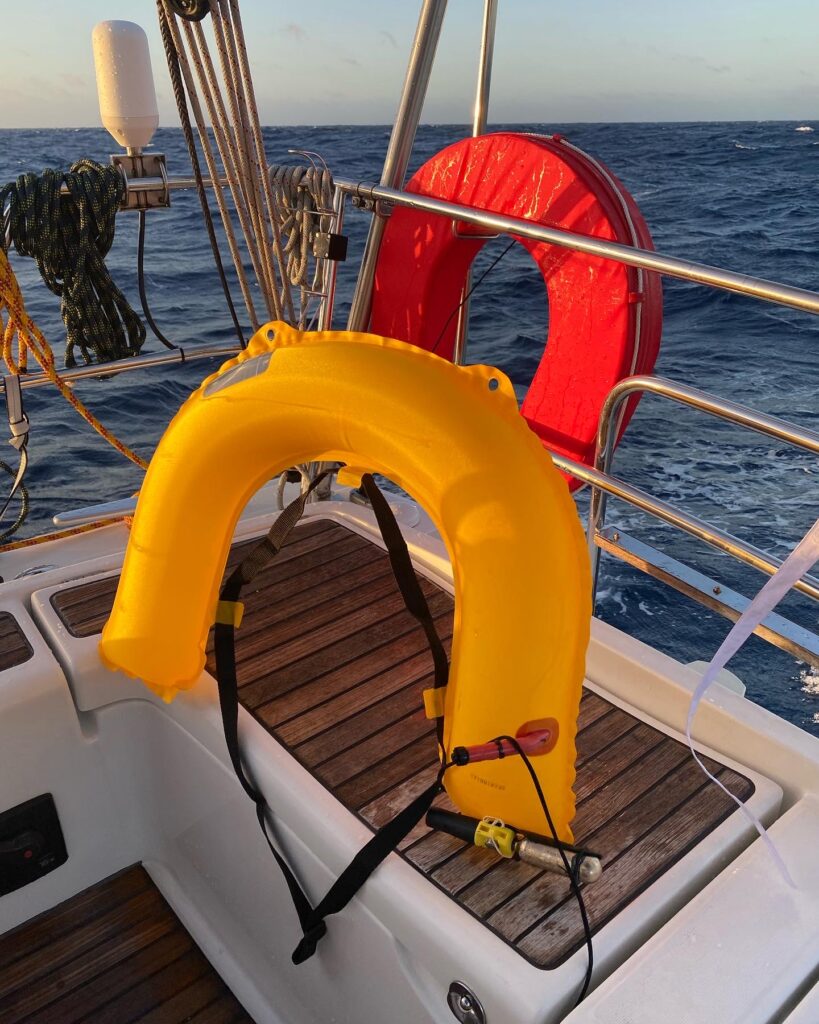The Caribbean Sea crossing was a passage we had heard alarming stories about from before. Both passage books and other sailors we had spoken to explained this relatively short passage (1200 NM) as the toughest one of their entire circumnavigation. In addition, reports had shown that this would be one of the sections of our trip with highest numbers of reported pirate encounters.
Charlottes uncle was still onboard and would join us for the passage, so with three people onboard we opted for a watch system with shorter shifts. We had a schedule that allowed for two hours on watch followed by four hours off watch and set days for cooking lunch and dinners for the entire crew.
Right from the start we reefed the sails but yet we were flying along. Spirits were high and we soon started to try to set into the new watch schedule. For us it generally takes approximately three tired days where most time off watch is spent sleeping. These are usually the days we ask ourselves why we do this, and deeply consider our choices when the alarm goes off at 01:50 AM and it is time to get dressed and start our shift. Gladly this usually passes and after approximately three days we get into the routine and start spending more time up socializing during the day, with the occasional nap when being off watch to catch up on sleep missed during the night. Soon the night watches are something to look forward to. Apart from when the alarm goes off and the five first minutes of zombie mode, it is an amazing feeling to listen to your favorite podcast or have a midnight disco session in the headphones under the moonlight lighting up sails as strong as a flashlight and a sky with enough shooting stars for every dream.
During this passage, we had all just gotten into routine as it was time to prepare for what the forecasts predicted to be the roughest patch of the crossing. This would time our rounding of the Colombian cape, a section known to be bumpy and uncomfortable. To make things as easy as possible for us, and avoid coming too close to the Venezuelan and Colombian coast, we took a wide loop from land. With three reefs in the main and a small section of the genoa, we were flying along. It was a slightly bumpy ride and we were swinging from side to side in the 25-35 knots of wind and 2-5 meter high waves. The waves were crashing in from both sides and from behind, giving the crew salty splash downs and occasionally even being so strong that the inflatable man over board buoy suddenly popped out of its holder and inflated. But Puffin was a champ and we could quickly count down the miles to arrival. After 24 hours of stronger winds, we were slowly ducking down behind the cape and with this the winds slowly eased. The waves died down rather quickly as well and another 12 hours later we could already notice a significant decline in wave height.
The next day we could once again enjoy avocado toasts in the cockpit in the sun and had one of the best afternoons of sailing so far on the trip. We now just had a 150 NM left to Colon, Panama, and were excited about a nice shower before digging into the preparations for the Panama Canal transit and making our way to the Pacific side. Surely this passage deserves a good G&T 🥳


